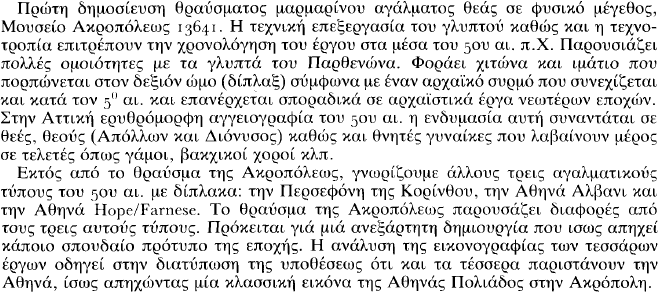This paper examines the fragment of a life-size marble statue of a goddess in the storerooms of the Acropolis Museum (inv. no. 13641). Both technical and stylistic considerations show that it is an original work of the mid 5th century B.C., issuing from the artistic milieu of the Parthenon. The figure was dressed in a chiton under a himation pinned on the right shoulder (diplax), following a sub-Archaic fashion current throughout the 5th century and recurrent in Archaising works of later periods. This dress is familiar from Attic red-figure vase-paintings, where it is donned by a number of deities, mainly female but male too (Apollo and Dionysos) and mortal women on festive occasions.
Apart from the Acropolis fragment, three statuary types in chiton and diplax are known from the 5th century: the Corinth/Mocenigo ‘Kore’, the Athena Albani and the Athena Hope/Farnese. The Acropolis fragment is compared to all three and found to be an independent creation, perhaps reflecting yet another large-scale prototype of the period. There follows a discussion of the iconographical type of all four figures and of the possibility that they are all Athenas, inspired by a version of the Athena Polias on the Acropolis.
